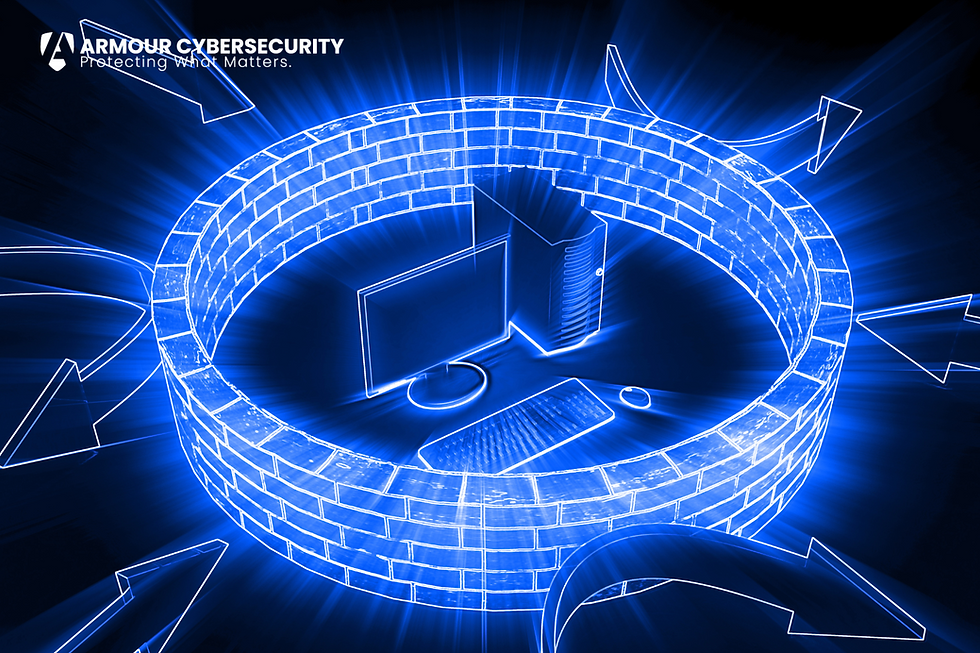Understanding Managed SOC: What It Is and Why Your Business Needs It
- David Chernitzky
- May 6
- 3 min read
Updated: Jun 9

Businesses face constant cybersecurity threats. To stay safe, many companies are turning to a Managed SOC (Managed Security Operations Center). But what is it, and why is it important?
What Is a Managed SOC?
A Managed Security Operations Centre is a service where a team of security professionals monitor, detect, and respond to cyber threats 24/7. This team is made up of SOC analysts, security analysts, and threat hunters who use advanced tools to keep your business safe.
A Managed SOC service is often provided by a third party. This means you don’t have to build a full security team in-house. Instead, experts watch over your organization’s network, systems, and data to detect any suspicious activity.
SOC Managed Security: How It Works
The main job of a SOC managed security team is to monitor security information and event logs using Information and Event Management (SIEM) tools. These tools help identify unusual patterns that may suggest a breach.
Once a threat is found, the team works quickly to detect and respond, reducing response times and stopping the attack before damage is done. This is known as threat detection and response.
SOC Benefits for Your Business
There are many SOC benefits that make it a smart choice for companies of all sizes:
24/7 Monitoring: SOC teams never sleep. They monitor your systems day and night.
Fast Response: With a dedicated team, response times are much faster, reducing risk.
Expertise: You get access to skilled security professionals, including SOC analysts and threat hunters.
Threat Intelligence: The team uses the latest threat intelligence to stay ahead of attackers.
Compliance Support: A managed SOC can help you meet compliance requirements for data security.
Cost-Effective: Building an internal SOC is expensive. Managed SOC services offer a powerful security solution at a lower cost.
What Does a SOC Include?
A SOC includes many important parts:
SIEM tools for log management
Threat detection and response tools
Security analysts to review alerts
Threat hunting activities
Reports for audits and compliance requirements
Why Choose a Managed Service?
Choosing a managed service gives you peace of mind. You don’t need to worry about hiring and training your own SOC teams. Instead, you rely on experienced security professionals who focus only on protecting your business.
In a world full of cybersecurity threats, having a trusted managed SOC partner can make all the difference. They help you stay safe, meet regulations, and respond fast to any attack.
Conclusion
A Managed Security Operations Centre is more than just a tool – it's a full team dedicated to keeping your organization's network secure. With the right SOC managed security solution, you can defend against cyber threats, improve your response times, and meet all your compliance requirements without stress.
If you want strong protection without the cost of building your own team, consider managed SOC services today.
Q1. What is a Managed SOC service and how does it differ from an in-house SOC?
A: A Managed Security Operations Center (Managed SOC) is an outsourced service where seasoned security analysts, threat hunters, and incident responders monitor your company’s network, systems, and data 24/7 using SIEM and threat intelligence tools. Unlike building an in-house SOC—requiring expertise, tools, and staff—a Managed SOC offers continuous surveillance and rapid incident response at a fraction of the cost.
Q2. What are the primary benefits of implementing a Managed SOC for small to mid-sized businesses (SMBs)?
A: Managed SOC services help SMBs by:
Ensuring 24/7 proactive monitoring to detect threats anytime.
Delivering rapid incident response, minimizing dwell time and impact.
Providing deep SOC expertise—such as analysts and threat hunters—without expensive hiring.
Enabling cost-efficiency, as outsourcing avoids infrastructure and staffing costs.
Supporting compliance, through audit reports and adherence to standards like PCI-DSS or HIPAA.
Q3. How does a Managed SOC detect and respond to a cyber threat?
A: A Managed SOC typically uses a SIEM (Security Information and Event Management) system to collect and analyze logs and events from across your environment. Advanced tools and machine learning flag anomalies and potential incidents. Upon detecting a threat, the SOC team initiates incident response—isolating affected systems, reducing risk, and recovering operations—all while documenting processes for post-incident analysis.
Q4: Can a Managed SOC help with regulatory compliance?
A: Yes—Managed SOC providers assist with compliance support by delivering continuous monitoring, audit-ready logs, and incident reports aligned to frameworks such as GDPR, HIPAA, and PCI-DSS. They integrate governance, risk, and compliance controls into their monitoring processes, helping organizations meet regulatory obligations efficiently.
Q5: Is outsourcing to a Managed SOC cost-effective compared to building an internal SOC?
A: Absolutely. Building an in-house SOC requires investment in tools, infrastructure, staffing (often 24/7), and training. A Managed SOC delivers equivalent or superior capabilities—such as real-time monitoring, expert staff, and threat intelligence—without the capital outlay . By converting fixed costs into predictable operating expenses and eliminating “alert fatigue”, it's typically a much more cost-effective solution .



Comments